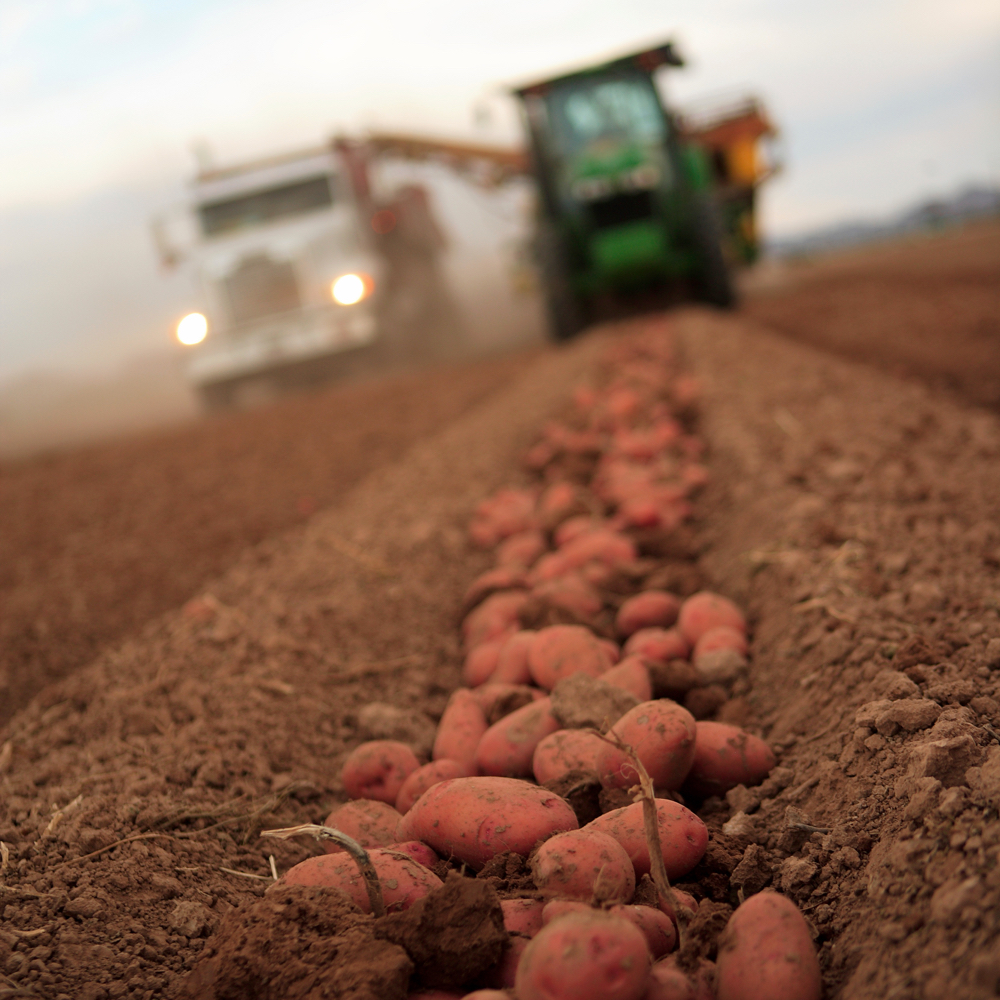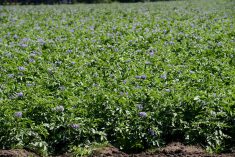Climate change resiliency and early potato dying studies were highlights of the Aug. 23 Elora Potato Research Open House.
Vanessa Currie, University of Guelph potato breeding technician, said the five-year research study on which varieties hold up best under increasing climate pressures was launched this year.
Why it matters: The annual potato research open house allows growers and buyers to see the potato varieties being tested and which ones may be available in future.
Read Also

The forced Japanese-Canadian farmers of the Second World War
Manitoba’s sugar beet farms drew on displaced Japanese-Canadians from B.C. during the Second World War
“One of the end goals is to release varieties for sustainability and resilience to climate change,” said Currie. Some varieties are nearing release for commercial use, she added.
“Some of the chip lines we’ve been testing for a couple of years for the early chip market do look very promising; 66-04 and 32-06 from the national breeding program.”
Targeted for the early chip market from day one, the two varieties have shown good yields and nice chip production at 90 days maturity in Leamington trials.
At the Simcoe potato research plot, a study on early potato dying spearheaded by Katerina Jordan and graduate student Griffin Bailey investigates how soil mitigation strategies could reduce nematode and verticillium inoculum in the highly susceptible Superior variety.
“We’re looking at different cropping, like rotational crops, potential biofumigants, cover crops and winter crops,” said Jordan, noting the rotation could be a one-, two- or three-year cycle with bare ground or alternative crops between potato crops.
The goal is to improve soil health via increased organic matter and aggregate stability to support antagonistic bacteria and fungi to reduce verticillium and nematode levels.
“On the other end, for the biofumigants, we’re essentially doing natural chemical control, so we’re trying to reduce inoculum levels through what is being released through mustards and other biofumigant crops,” said the University of Guelph associate professor and potato program investigator.
“At this point, we know fumigation works, but we are starting to see some differences in some of the soil health parameters,” said Jordan.
“We just haven’t necessarily been able to equate those or correlate those with reductions in inoculum level.”
Bailey said time is the most significant challenge facing the study. While there are soil changes in years two and three, a longer-term study is required for soil mitigation measures to reach their full potential.
The program recently secured five years of additional funding, beginning in 2024, which will allow the initial plots to produce seven years of data and new plot research.
“What we know for sure is the weather of the year has a huge impact on the disease,” said Bailey. “In our first year, we barely got any disease at all because we had rainy conditions, and there was enough moisture to keep the potatoes alive.”
In contrast, last season was exceptionally dry, leaving crops decimated by high disease pressure regardless of treatments.
This year provided a balanced environment, so Bailey is optimistic it will provide more varied data results.
Pat Gilbert, Loblaws vendor development, and colleague Patty Petruccelli, Loblaws supply chain manager, attended the open house to learn what might be ahead for vendors and producers.
“We’re looking for that new potato, something different to offer the customers that could spark the eye — a different flavour profile, a different colour profile, antioxidants — something that’s really good and healthy for the consumer,” said Gilbert.
He attends research days with growers to understand which varieties pique their interest and what yields, sizes and taste profiles may reach the market.
Petruccelli said buying potatoes is a challenge.
“It’s hard to sell (customers) on these unique varieties or specialty varieties,” she said.
“In B.C. and somewhat in Ontario, you can get that potato variety uniqueness, but in Quebec, you can sell a 20-pound bag of (any variety of) potatoes, no problem.”
She said consumers in Ontario and B.C. are more likely to buy five-pound bags rather than larger amounts designed to feed a family.















